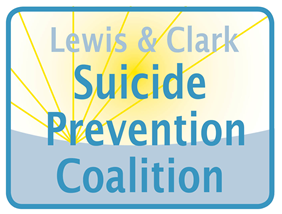Lethal means refers to anything someone might use to take their life, such as an intentional overdose of medication, a firearm, or another method of self-attack. By limiting access during a crisis, people experiencing suicidal thoughts are less likely to pass away.
— National Alliance for Suicide PreventionMany suicide attempts take place during a short-term crisis. Putting time and distance between lethal means and individuals who may be in crisis can prevent suicide and save lives.
Lethal means in Montana and the U.S.
Basic facts
- Up to 95% of people who survive a suicide attempt do not die by suicide later in their lives.
- The time between a decision to attempt suicide and the actual attempt is usually five minutes to an hour, but 48% happens within the first 10 minutes.
- Limiting a person’s access to methods to take their lives dramatically decreases suicide rates in communities.
- Most people don’t substitute lethal means if they no longer have access to their preferred method. If they do, they tend to use something less lethal. In that case, they will have time to reconsider and seek help, or someone might find them and call for medical assistance.
Medication and firearms
- Medications are most commonly used in U.S. suicide attempts, while firearms are the most common method resulting in suicide deaths.
- In 2019, 7.5% of all Montana suicides involved prescription medication.
- From 2010 – 2019 firearms were used in 63% of all Montana suicides, and 86 percent of all firearm deaths in the state were suicides.
- Montana males are 5 times more likely than females to die from a firearm-related injury.
Youth suicide and lethal means
- More than 82% of Montana youth suicides involved a parent’s firearm.
- Even when parents instruct children to stay away from a firearm in the home, those directions do not prevent firearm misuse, especially in a crisis.
- Hiding or dismantling firearms aren’t big enough deterrents to prevent suicide. Kids know where their birthday gifts are hidden and they know the location of firearms in the home.
Ways you can keep your home and loved ones safe:
Firearms
- When not in use, keep all firearms locked and unloaded. If available, store them in a gun safe, or use a gun lock to keep them secure.
- If you use a firearm for home protection, consider an RFID or biometric safe. RFID safes allow instant access with tags that are programmed specifically for each safe.
- Unload ammunition and lock it separately from available firearms.
- If someone in your household is struggling, consider temporarily giving available firearms to a trusted friend or family member outside of the home. If that doesn’t work, get a gun lock and ask someone you trust to hold the keys and combinations.
- Montana law includes a Good Samaritan law that removes liability if you store a firearm for another person.
- To request a combination gun lock, please contact us here.
Medication
- Keep all medication locked, save for a one-week supply. If someone in your household is in a mental health crisis, limit access to 1-day’s worth of Rx.
- Dispose of any leftover medication by dropping them off at a prescription disposal site or by requesting a Deterra Drug Deactivation System. You can get rid of medication by mixing it with dirt, kitty litter, or coffee grounds and then placing it in your trash.
- Ask your pharmacist to use a blister pack instead of a bottle for pills
- Ask your doctor to limit doses to a one-month supply

